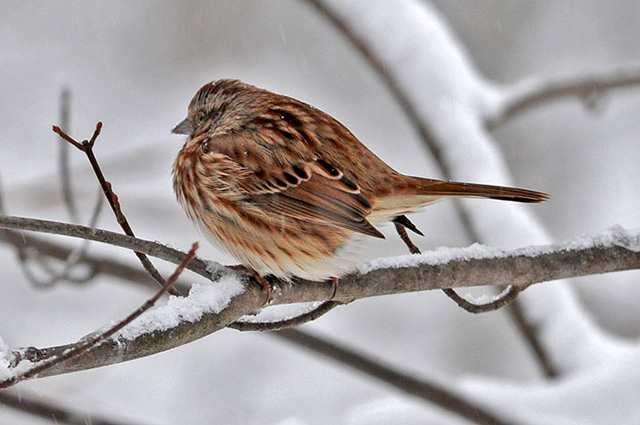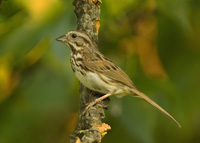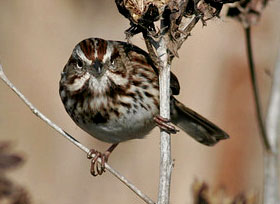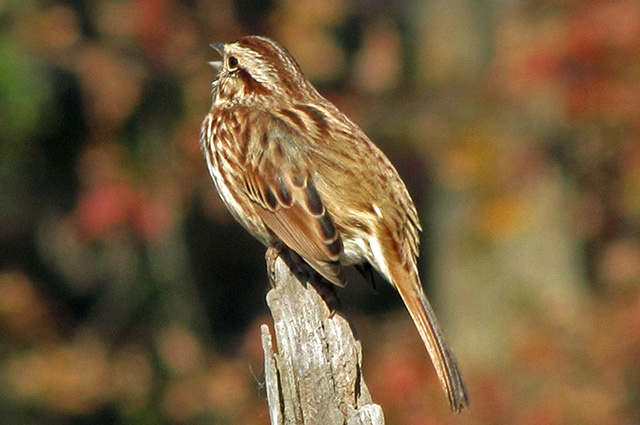 |
Song Sparrow A well-named bird, the Song Sparrow gets its first singing lesson by listening to its neighbors. Birds in adjoining territories share songs, with individuals warbling up to 20 distinguishable tunes. A song may contain up to 1,000 variations on its basic theme. Songs enable the sparrow to tell a neighbor from a stranger that could pose a threat. Tunes also play an important role in helping females stay near their mates. A female will prefer her mate’s melodious, complex trills to those of all other Song Sparrows, although she repays him with harsh chatter during nest building. Maybe it’s because she builds the nest alone. Twenty-four subspecies of Song Sparrows exist, and they are one of the most regionally variable birds in North America. This simply means that sparrows from different places look different. Pale ones come from the Desert Southwest. Darkly colored birds live in the Pacific Northwest; their plumage contains melanin, which also renders it resistant to the feather mites found in humid climates. Whatever their origin, feathers show widely varying streaks of white and brown, with red-brown and gray decorating the birds’ heads. They are all foragers, collecting seeds, fruit, and insects from among grass and weeds in habitats that are open, shrubby, and wet (think of tidal marshes and Pacific rainforests for a start). Widespread throughout North America, Song Sparrows range continuously from the Aleutians to the Eastern United States, with an isolated population inhabiting Central Mexico. They are unafraid of humans and will often nest close to a house.
|
 |
 |
Photos: Above © Kim Hosen; Suburban backyard; Feb 2010 Lower left © Julia Flanagan Lower right © Tony Coomer, Huntley Meadows, Fairfax, Virginia Below © Gary Myers; Nov 2010 Text by Ellen Katinas |






